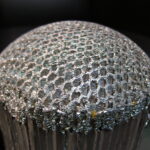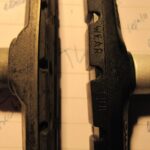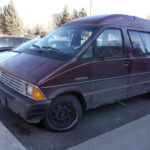How Many Clear Coats on Car? (Explained)
Ever wondered why your new car looks so glossy, even before detailing it? There’s a lot of science behind it. Every car comes with different layers of coats and pigments to achieve the final, uniform layer of what you call paint.
During the paint job, a car’s body is rigorously polished and cleaned, to get rid of any contaminants and surface irregularities. A layer of electronic coat is then given via electrolyte dipping, and a primer is then applied to it, which becomes a receptacle for the paint.
Paint consists of a base coat (the real color of the car), which is applied over the primer and is then covered with a clear coat. What’s the purpose of a clear coat? How many layers of clear coat can you apply? How do you prep and sand the clear coat? And what else do you need to know about it, I have discussed all of it in detail in this comprehensive guide.
How Many Clear Coats Do You Apply on a Car? On What Factors Does the Number of Coats Depend?
As per standards set by the automotive industry and the experience of experts, you should apply 2-4 layers of clear coat on a car. A custom paint job is an exhaustive process, and not getting it right can become really frustrating. So to get the right stance of paint, and a glossy finish, always apply the clear coat in 2-4 layers.
The number of clear coat layers depends on various factors, such as the thickness of the base coat, the quality of primer, and the climate. If the base coat has an adequate thickness, even a 2-layer clear coat would suffice, and with a good quality primer, you don’t need to protect the paint by adding layers of clear coat as it looks uneven.
If you live in a region where mercury keeps rising, you need those extra layers of clear coat to protect the base coat from peeling or getting damaged.
Also read: Does Car Color Affect Price? (+Most Expensive Colors)
Why Do You Apply Clear Coats on a Car?
The purpose of a clear coat is to protect the paint of the car and offer a glossy shine. If the base coat is left unprotected, the environmental hazards and UV radiation would damage the paint.
Additionally, the clear coat also masks small discrepancies and swirl marks on the car’s body, apart from offering some physical protection as well. The UV rays cause oxidation of the base coat that appears as orange peel and small patches of faded paint, the purpose of the clear coat is to prevent this problem.
It is a guardian of your car’s paint, protects it from small scratches, hides any discrepancies, and adds to the value of your car by keeping it shining for years to come.
Do You Buff Before a Clear Coat?
Yes! The surface of the car must be prepped well to receive the clear coat. Buffing of the base coat is done to get rid of any uneven layers, contaminants, or bubbles left during the process.
Before applying a clear coat, the car’s surface is buffed with wet 1000-grit sandpaper and professional buffer. It is then cleaned with a microfiber cloth and the clear coat is then applied adequately to the base coat layer.
Also read: Spray Gun vs. Spray Can- Differences
How Long Does a Clear Coat Take to Dry?
A clear coat takes between 20 to 45 minutes to dry, depending on the type of the clear coat being used, the thickness of the layer, and the temperature of the room.
If the layer is very thick and the atmosphere is damp, it is going to take longer than usual for the clear coat to dry. Make sure that you apply the clear coat during the noon hours, and keep the area well ventilated to accelerate the process of drying, and prevent contamination of the clear coat layers.
Some people use hairdryers and fans to speed up the drying process. It is highly unadvisable as the temperature change can alter the properties of the clear coat and add lots of contaminants to the layering. Wait out and let the clear coat dry naturally.
Also read: 5 Easiest to Maintain Car Colors (All You Need to Know)
Can You Apply a Clear Coat Over a Clear Coat?
It is technically advisable to apply a layer of clear coat over the existing clear coat for added protection and that nice glossy shine. The majority of times, a single layer of clear coat is as good as non-existent, and with just 0.05 mm of thickness, it doesn’t offer any protection or shine to the car’s surface.
To ensure that the clear coat you’ve applied to your car would actually make some difference, it is ideal that you apply a layer or two of clear coat over the existing coat. Make sure that the surface is buffed, and prepared well to receive the clear coat, and that there are no contaminants or irregularities between the layers.
You should inspect the layer of clear coat personally before you proceed to the next step and avoid any headaches later on.
Should I Sand Between Coats of Clear Coat?
Technically, you do not necessarily need to sand between the layers of clear coat. The clear coat layers are already very thin, even thinner than a $ bill, and scrubbing with sandpaper would bleed the layers away.
It is recommended that you sand the base coat and prepare the surface well before applying the clear coat, and once you’re done with applying all the 2-4 layers of clear coat, sand it again afterward for proper finishing.
If you need to make any corrections or buffing in between the layers of clear coat, you can either use very low grit sandpaper or even a scrubbing polish to get that clean surface and continue clear coating your car. Remember that the clear coat is a very thin layer of protection and not a strong guard like ceramic coat which has 9H hardness and resists aggressive scratches.
What Should Be the Thickness of a Clear Coat?
Ideally, the clear coat should have a thickness of not more than 80 microns and not less than 30 microns. This thin protective layer needs to be thick enough to offer some physical protection, and yet not so bulky that it looks uneven on a car’s surface.
On the other hand, if the clear coat layer is too thin, it would either be useless or show patches of faded paint in the areas where it is not properly applied. Once you plan to redo the clear coat layering on your car, get the proper tools and make sure you prep the surface professionally before applying the clear coat.
As per the industry standards, the thickness of the clear coat should be ideally around 0.05 mm.






